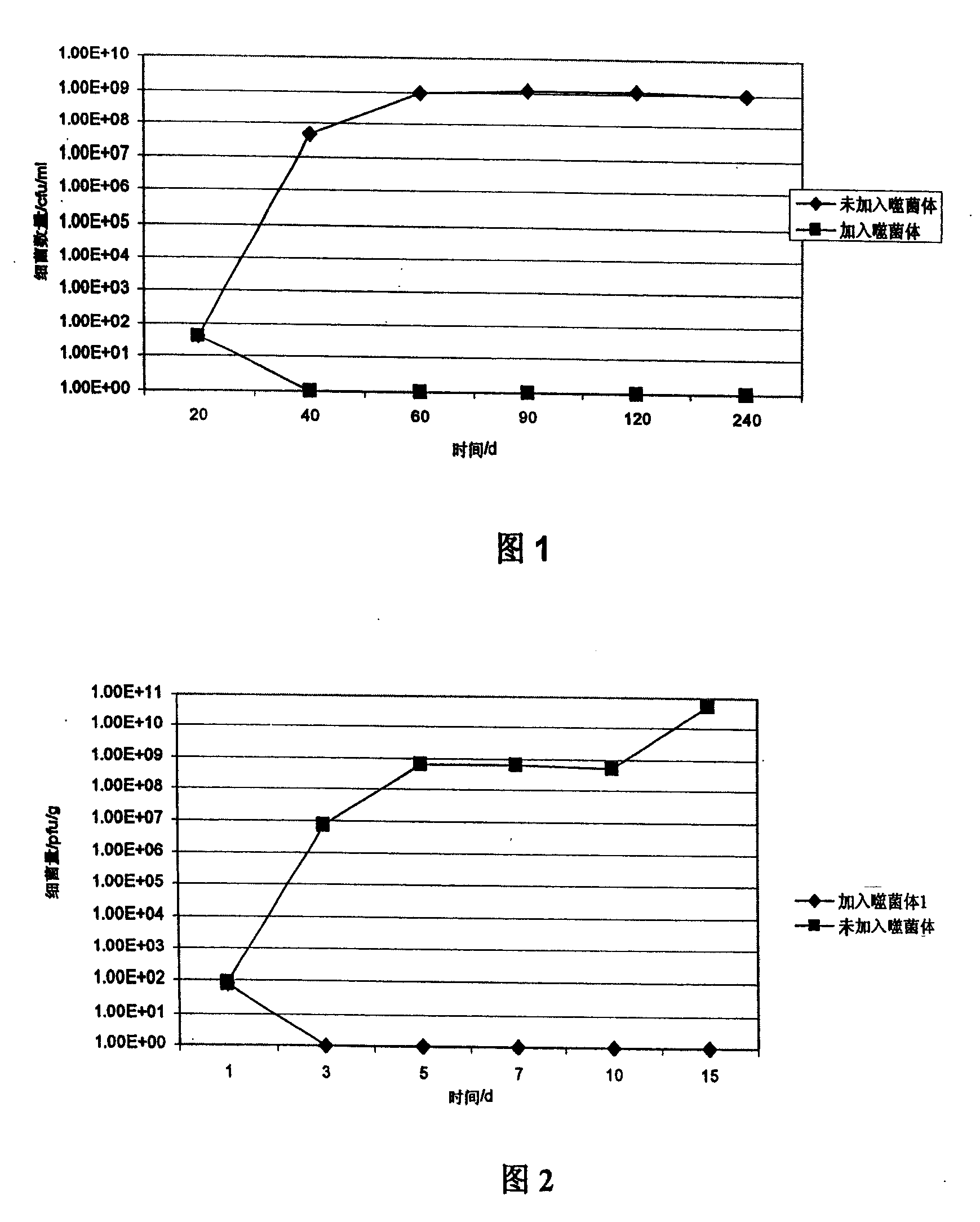Separated coliphage and application as biological fungicide in foods and anti-infection contamination thereof
A technology of Escherichia coli and bacteriophage, applied in the field of bioengineering to prevent pollution
- Summary
- Abstract
- Description
- Claims
- Application Information
AI Technical Summary
Problems solved by technology
Method used
Image
Examples
Embodiment 1
[0022] Phage Screening and Purification
[0023] (1) Sample collection and processing
[0024] The samples in the present invention were collected from Zhuhai, including untreated sewage from the Fifth Affiliated Hospital of Sun Yat-Sen University, sewer sewage in Zhuhai City, seawater at the sewage discharge estuary, poultry farms in Zhuhai City, pig farms in Zhuhai City, and slaughterhouses in Zhuhai City.
[0025] The collected samples were adjusted with NaOH to make the pH about 7.0, centrifuged at 4000g / min for 15min, and filtered with a 0.45um filter membrane to obtain the supernatant. . Take 75ml of the sample after filter sterilization, and add 25ml of 4 times LB medium.
[0026] (2) Phage-specific amplification of Escherichia coli in the sample
[0027] Add pre-amplified Escherichia coli (OD about 1.0, adding ratio 1:100) to the processed sample, place it on a constant temperature shaker at 37° C., and cultivate it at 250 g / min for 6-8 hours.
[0028] (3) Determina...
Embodiment 2
[0037] Phage count method (titer)
[0038]Dilute the obtained phage sample by 10 times, take 100 ul of the sample with a certain dilution ratio, lay a double-layer plate with the method in the step (4) described in Example 1, get the appropriate proportion of the plate to calculate the number of plaques, one A plaque represents a phage monomer.
[0039] Bacteria counting method (titer)
[0040] Counting by standard plate method
[0041] Phage Stability Assay
[0042] 1. Effect of temperature on phage
[0043] On the day before the experiment, the titer of the phage was detected, and the phage samples were placed at 4°C, room temperature, 37°C, 50°C, and 70°C respectively, and the titer was measured after incubation for 1 hour. The effect of temperature on the phage sample was thus obtained.
[0044] Incubate the phage at 4°C, room temperature and 37°C, and measure the titer at 1d, 5d, 10d, 15d, and 30d
[0045] The results showed that the titer of phage BPH-EC-5 hardly c...
Embodiment 3
[0061] Toxicology experiment
[0062] Kunming mice, clean grade, weighing 22±3g, 2 months old (certificate number: SCXK (Beijing) 2004-0001), were provided by the Experimental Animal Research Center of Peking Union Medical College. The experimental animals were kept in a clean-grade feeding room with a room temperature of 18-22°C, a relative humidity of 40%-70%, and a 12-h sunshine and dark cycle. 20 experimental mice, half male and half male, after 3 days of adaptive feeding, were randomly divided into two groups (phage group, control group), 10 mice in each group (5 male and female), and the phage dose of 1011pfu / kg was given to the phage group. BPH-EC-5 and the control group were given the same amount of normal saline for 15 days, and the experimental mice were killed by neck dislocation, and the internal organs were checked.
[0063] The observation results showed that this amount of phage BPH-EC-5 had no effect on the daily behavior of mice. Anatomical examination of in...
PUM
 Login to View More
Login to View More Abstract
Description
Claims
Application Information
 Login to View More
Login to View More - R&D
- Intellectual Property
- Life Sciences
- Materials
- Tech Scout
- Unparalleled Data Quality
- Higher Quality Content
- 60% Fewer Hallucinations
Browse by: Latest US Patents, China's latest patents, Technical Efficacy Thesaurus, Application Domain, Technology Topic, Popular Technical Reports.
© 2025 PatSnap. All rights reserved.Legal|Privacy policy|Modern Slavery Act Transparency Statement|Sitemap|About US| Contact US: help@patsnap.com

